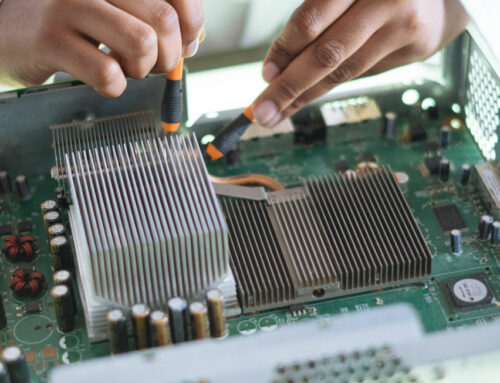Regularly auditing or assessing your network can help you keep track of inventory and determine how well your network is working. A network audit will comprehensively review your network, network devices and other equipment (servers, desktop computers, firewalls, etc.) for the following things:
- Hardware Inventory
- Software Inventory
- Security Vulnerabilities
- Patch Management
- Compliance
If your business is in a regulated industry, such as banking or healthcare, you may also have external auditors come in to assess your network. Doing an internal audit first can ensure you’re prepared for an external audit.
You may have other reasons for doing a network audit. These can include issue resolution, doing a thorough inventory of network resources, or determining whether it’s time for a network upgrade or refresh.
Getting Ready for Your Network Audit
As with starting any project, before you start your network audit it’s important to ask some questions and clearly define the scope of the audit. To ensure the success of your audit, loop in stakeholders and leaders as well as the managers of any impacted teams. This will help make sure that any questions they have are answered and that you design your audit to get the desired results.
The scope of your network audit may only be an assessment of routers, switches, firewalls and other network devices. Or it may also include servers and user PCs. You may also want to audit the applications running on your system. Knowing exactly what needs to be examined and why will help you define the scope of the audit.
Network Auditing Tools
To help you in your audit, there are several tools available. These tools perform different parts of the network audit function, so you may need to find the right combination of tools to meet your needs. You may also want to review the tools you have to determine if they offer network auditing.
There are tools that can perform inventory, create and provide network diagrams and generate reports. For network inventory, diagram and analysis there are from Solarwinds, NetformX and Open-AuditIT.
To assess and audit performance, there are several network analyzer tools available. Wireshark is one of the most popular tools, but there are other tools available, such as Netflow and ManageEngine. We cover some network analysis tools in our post on Diagnosing Mystery Network Issues.
For security assessment, you want tools that will assess your network and device configuration and report any issues. You may also be able to find tools that will help you resolve any issues they find. Security audit tools are available from Nipper and Nessus.
What to Look for In a Network Audit
Inventory Hardware
By regularly auditing your network, you can keep an updated inventory of all of your hardware. Auditing your hardware can help you make decisions on whether your systems are old and ready for a full upgrade or whether you can purchase used hardware to keep your network running. If you find unauthorized devices on your network, that may be cause for security concern.
Inventory Software
Just like knowing what hardware is running on your network, it’s also important to know what software is running on your devices. Old software can be preventing people from doing their jobs effectively or can indicate a need for patching. It can also be a security risk.
Identify Security Vulnerabilities
When performing a network audit, include the assessment of security and identify any vulnerabilities. Common vulnerabilities are weak or missing passwords, unapproved services, open permissions or firewall or encryption issues.
Patch Management
As mentioned, having an inventory of your software can let you know where you may need patching. You may also identify systems that require patching. The tools you use to identify these systems may also be able to confirm that the patches have been successfully deployed.
Compliance
Compliance for your business may include internal standards and external standards, including the requirements you may need to comply with for an external audit. In addition to compliance with standards, performing an audit may also identify missing or expired software licenses. If you’ve shared software with everyone in the company, but only have licenses for a handful of users, an audit will help you identify it.
Creating Your Post-Audit Report
Once your auditing activities have completed, you will need to document the findings of the audit. This often takes the form if a report, which may include network diagrams, charts and inventory lists. You may be able to generate reports from some of the network auditing tools you’ve used. If you’re presenting your findings to management, you may need to present your report in an easy to understand, non-technical way.
Your report should also offer recommendations to deal with the issues that have come up. This may mean presenting a proposal for a major hardware upgrade, removing outdated software, or fixing a weak firewall. Presenting these issues in order of severity or by how quickly and easily they can be fixed will make it clear that you have a plan to remediate any issues the audit has uncovered.
It’s Better to Know
Network auditing can help you answer questions about the state of your network, hardware or software. It may inform important decisions for your business or budget. And it may uncover issues that you weren’t aware of before. But it’s always better to know because becoming aware of them can help you fix them before they can cause a major problem.




